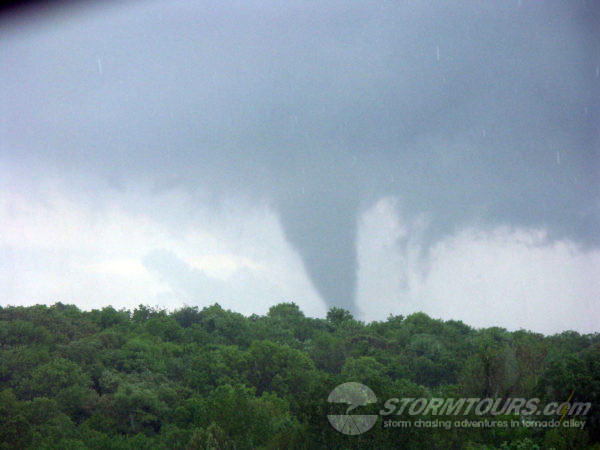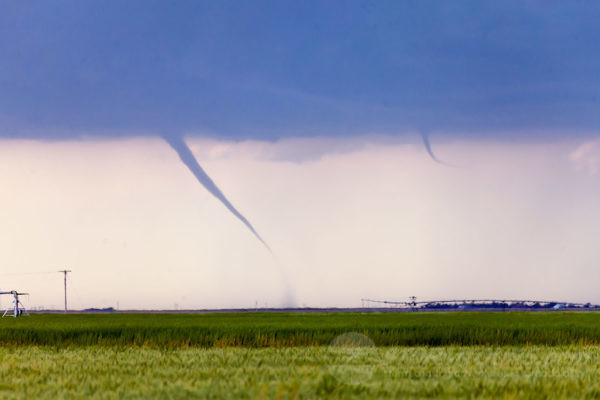7. We’re protected by the hills from tornadoes.
Tornadoes have been witnessed moving through the Rocky Mountains in Colorado and Wyoming. Chances are, those mountains are a lot bigger than the hills around your home! Hills do not disrupt tornadoes. In fact, they may possibly make the tornado even more dangerous, and not just because they could limit your visibility of an approaching storm, but because the tornado could actually increase it’s rotational wind speeds while traveling down a hillside.

Imagine taking a rubber band with one end in each hand and spinning it. If you were to stretch the rubber band while doing this, the rotation would increase. The same is true when a figure skater pulls their arms in towards their body while spinning. This is a rule of physics called torque of angular momentum. The same rule of physics applies to tornadoes (because it is, after all, a rule of physics). When a tornado’s base travels downwards it is stretching the rotating column of air, this, in turn, increases the rotational speed of the tornado. Tornadoes do not “jump” hills, if you live in an area surrounded by hills, take the same level of precaution that anyone else would.
8. A tornado is always visible as a funnel cloud.
A tornado is defined as “a rotating column of air that extends from the cloud base and is in contact with the surface.” The keyword in that definition is “air”, we, of course, cannot see air itself. A tornado does not always fill in its funnel with condensation or debris. We’ve seen many tornadoes that appear to the untrained eye as “skipping,” however tornadoes don’t “skip” either. What is simply happening is the condensation in the funnel at the surface is filling in if the relative-humidity and pressure drop permits.

We have seen many tornadoes that were dismissed as “funnels,” despite visible evidence of rapid rotation on the ground. If you see a funnel don’t become fixated on the funnel itself, always look at the ground beneath it because the tornadic circulation usually extends beyond the visible funnel. More often than not, you’ll see evidence of rotation, such as swirling dirt and debris, before the condensation funnel completely fills in. Further, if a change in pressure suddenly occurs within the tornado, it may appear that the tornado is “skipping,” but careful observation will continue to show signs of ground-level rotation.
